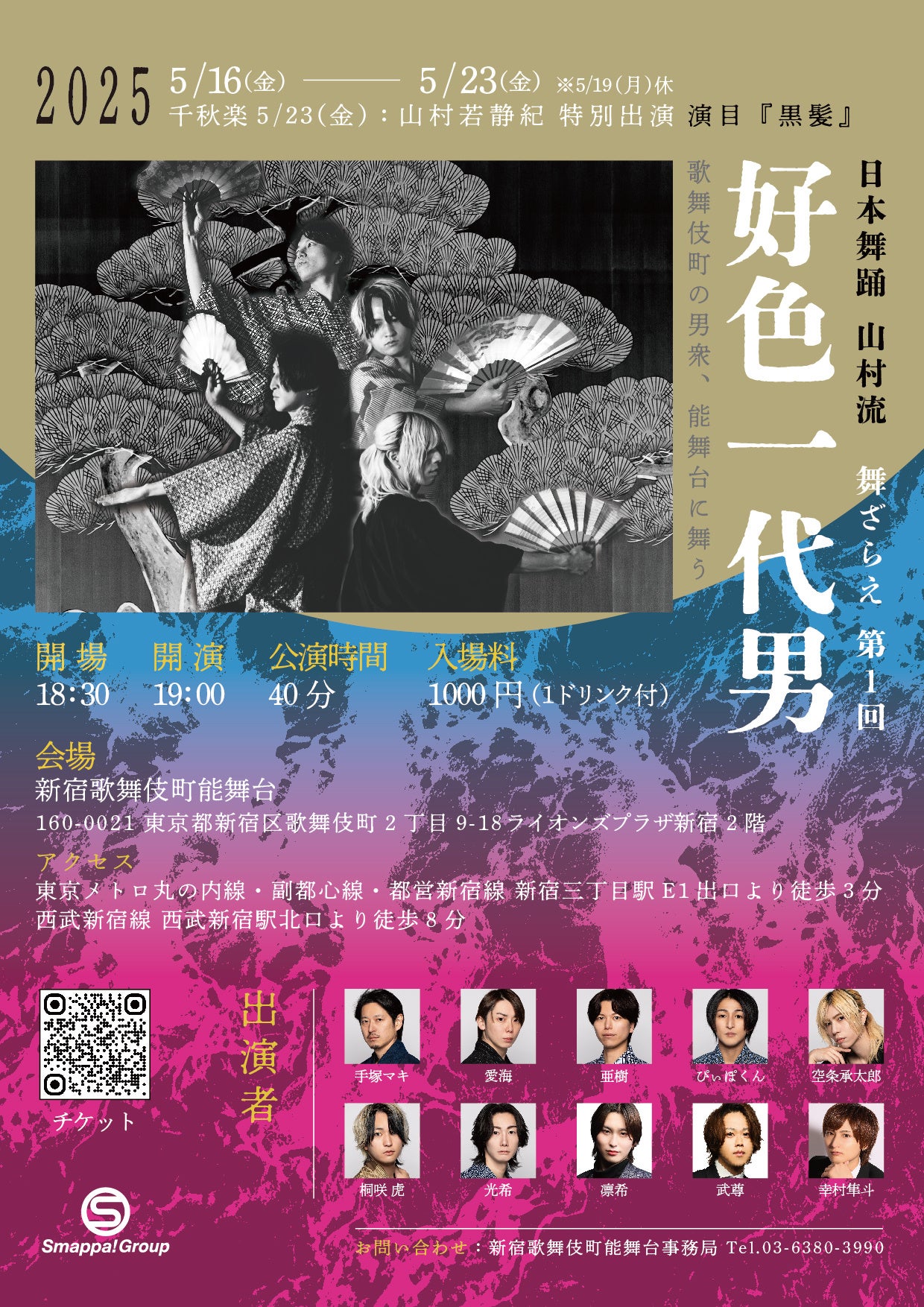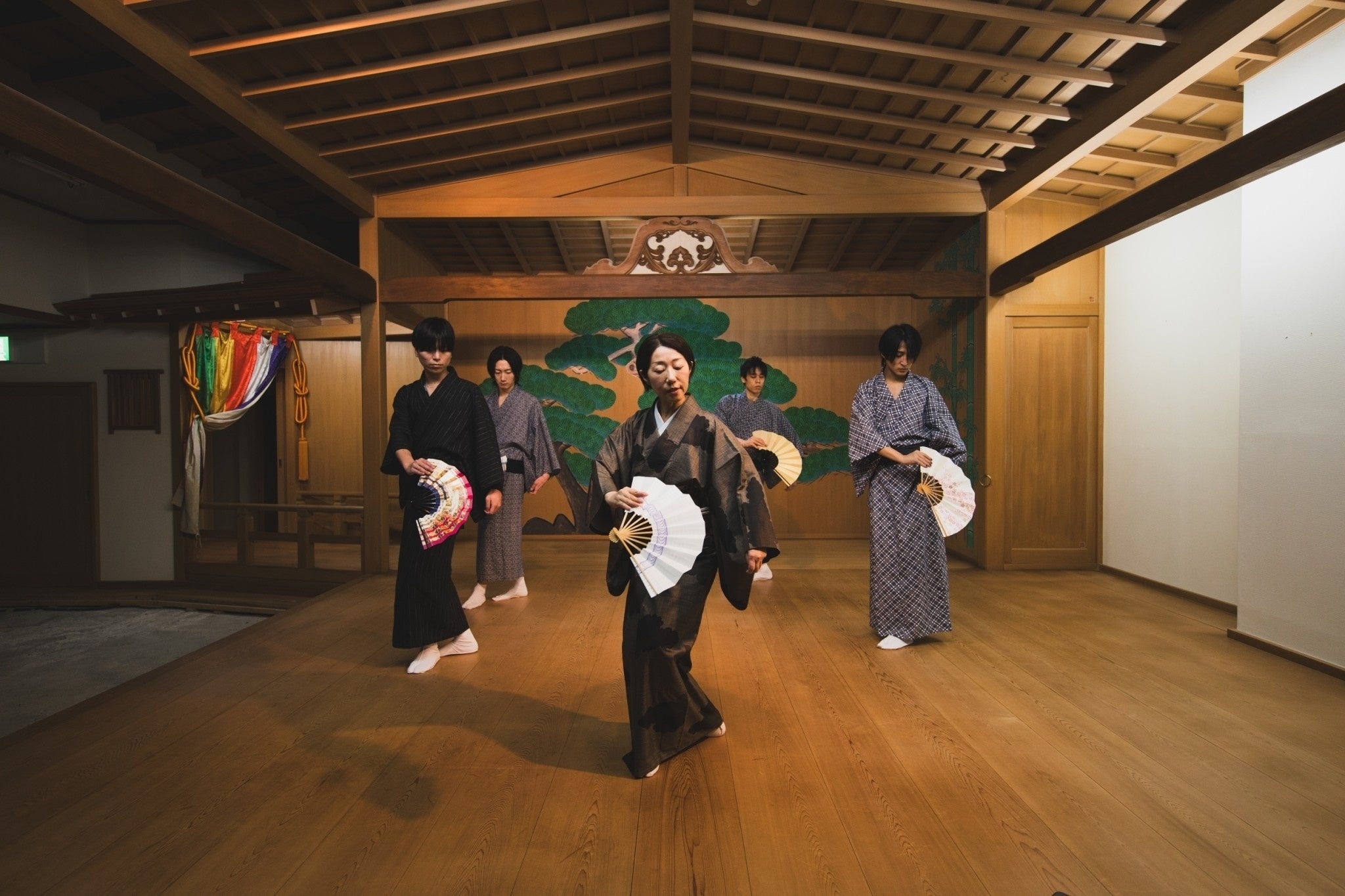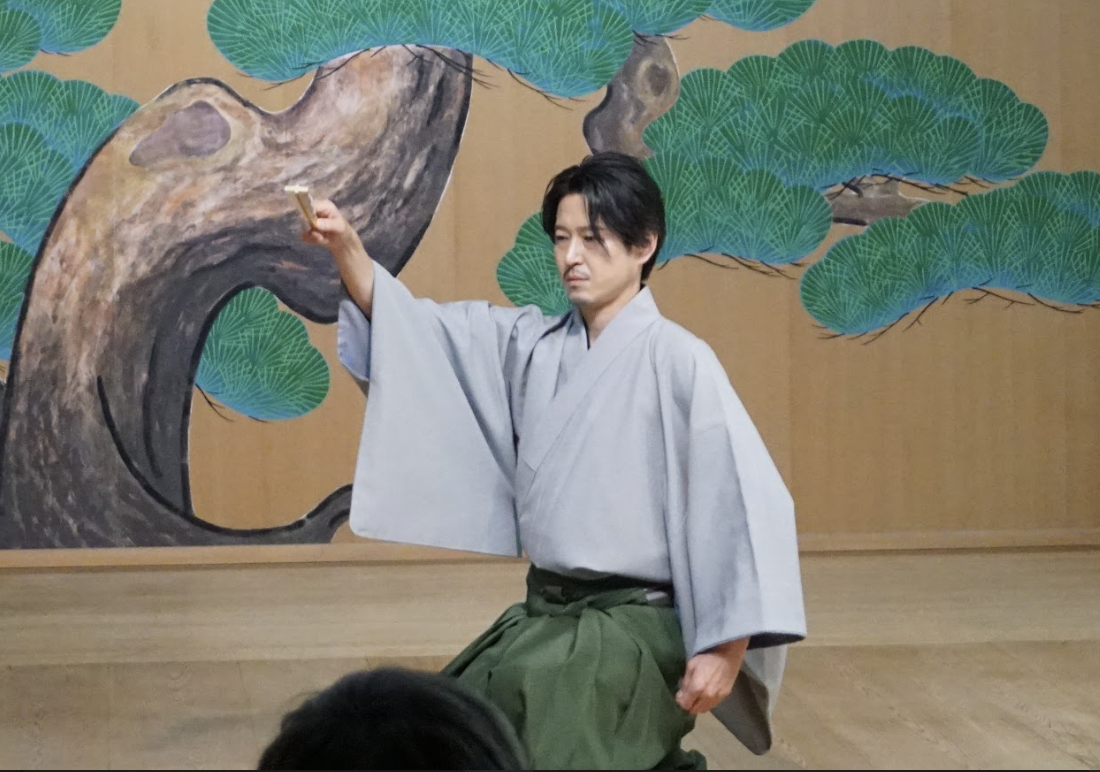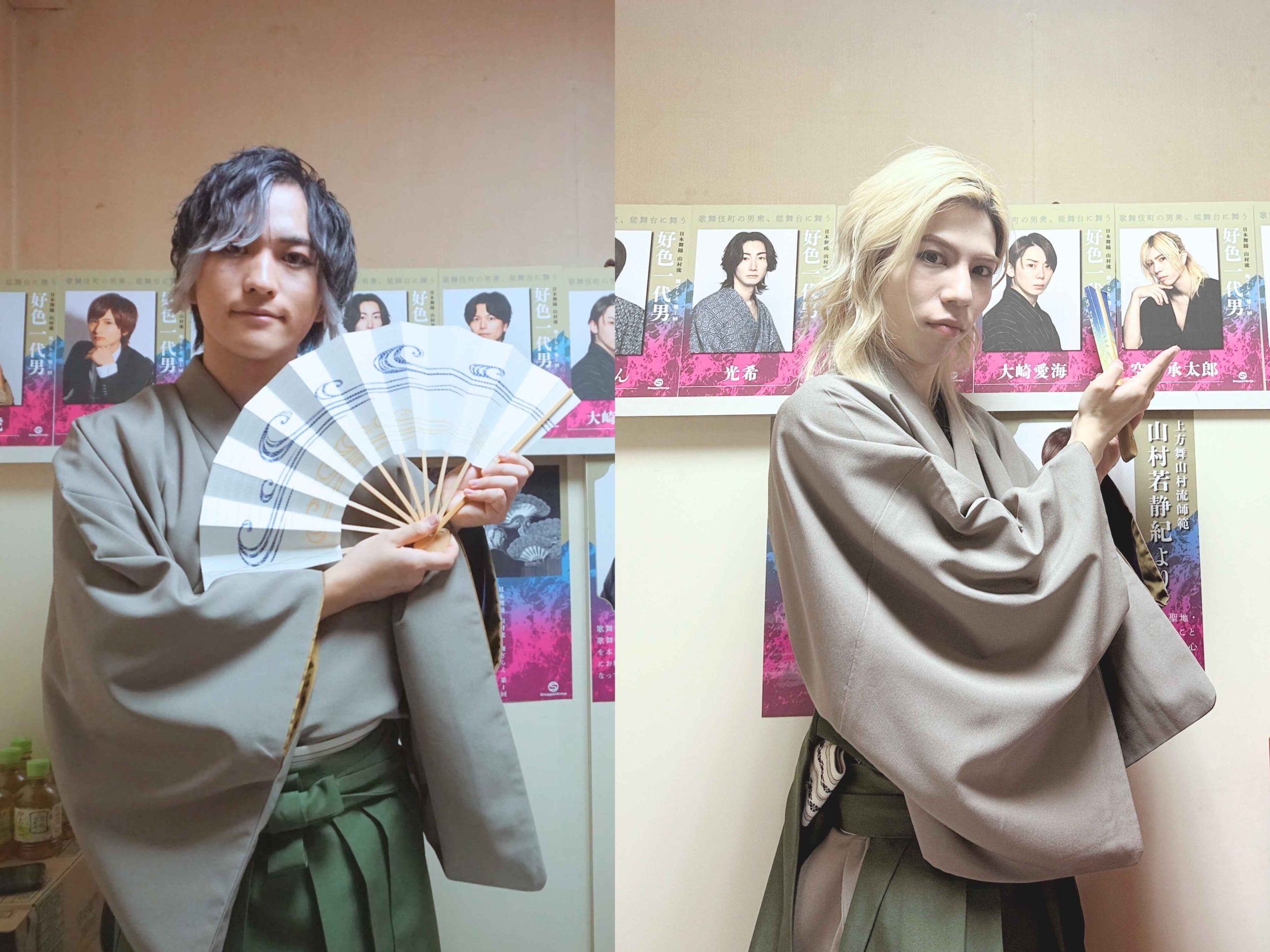Kabukicho Hosts: From the Nightlife Stage to Classical Grace
A compelling cultural crossover between Tokyo’s vibrant host club scene and the timeless elegance of classical Japanese performance.

Have you ever come across the concept of host clubs in Tokyo? While many visitors to Japan are familiar with historical Temples and Shrines, Sushi and Anime, few have discovered the unique subculture of Tokyo Shinjuku’s host clubs.
In this article, we will introduce you to the mysterious and hidden world of luxury found in Shinjuku’s host clubs — and the ongoing innovations redefining their allure.

What is a Host Club?
A host club is a sanctuary, or some might say, a forbidden paradise, where refined hosts graciously welcome you into a world far removed from everyday life. Here, reality softens, worries dissolve, and you are treated not just as a guest, but as royalty. It is a night of sweet danger and delicate charm, where conversation, attention, and ambiance combine to crown you queen, even if just for a night.

Hosts are, in many ways, emotional virtuosos—professionals finely attuned to the unspoken, who navigate social nuance with grace, empathy, and carefully composed allure. Their craft demands a delicate orchestration of intuition, presence, and self-mastery. In a sense, they embody the essence of theatrical performers.

The Hosts of Kabukicho: Entertainment Professionals Take on a New Challenge
In a surprising and culturally rich departure from their usual roles in the host club industry, members of the Smappa!Group took to the stage to showcase the elegant art of Kamigata-mai — a classical Japanese performance form celebrated for its refined stillness, subtle expression, and deep historical roots.

Noh and Kamigata-mai: The Splendor of Japan’s Traditional Performing Arts
Noh (能) is one of Japan’s oldest performing arts, dating back to the 14th century. Characterized by its slow, deliberate movements, poetic language, masks, and spiritual themes, Noh is less about narrative and more about presence. Kabuki, in contrast, is flamboyant and theatrical, while Nihon-buyo (Japanese classical dance) includes a broader range of traditional dance styles.

Kamigata-mai is a refined form of Nihon-buyo born in Kyoto and Osaka (the Kansai region). Designed for intimate indoor spaces like tatami rooms, it values quiet elegance and controlled movements that wouldn’t disturb the dust in a traditional room. It’s often accompanied by the subtle plucking of a shamisen. What distinguishes Kamigata-mai is its exceptional ability to express emotions and inner feelings.
Beyond the Club: A Step into Tradition

The decision to engage in a highly stylized classical Japanese performance was rooted in a deeper purpose. Since the majority of their clientele are affluent individuals, the hosts took on the challenge of learning classical Japanese performance as a way to better understand and connect with their guests’ interests and cultural sensibilities—including those of international visitors, for whom traditional arts often hold a particular fascination. They also saw it as an opportunity to refine their own craft, believing that the discipline, elegance, and awareness cultivated through this traditional art would ultimately enhance their professional occupation.

Yet stepping onto a Noh-style stage presents a profound vulnerability, one that demands not just presence, but surrender to stillness, form, and centuries of tradition. As host Tora Kirisaki shares, “I often talk to international guests, but I once struggled to explain what makes Japan special. Learning this traditional form allowed me to express that answer, and I found a way to give shape to that answer.”

The Life of an Amorous Man’: From the Edo Period to Modern Times
This recital draws inspiration from Ihara Saikaku’s 1682 novel The Life of an Amorous Man (Kōshoku Ichidai Otoko), widely considered the first work of popular fiction in Japan and the cornerstone of the ukiyo-zōshi genre—stories capturing the spirit of the “floating world.” Its protagonist, Yonosuke, is a worldly and irrepressible figure who devotes his life to the pursuit of love and fleeting pleasures, navigating the pleasure quarters of Edo with wit and abandon.

As part of Smappa!Group’s continued engagement with Japanese culture, the hosts have immersed themselves in more than just performance. They participate in ‘Poetry Gatherings’ (Utakai) at the club AWAKE and study under esteemed instructors of classical Japanese arts. Through this multifaceted cultural commitment, they aspire to cultivate a deeper sense of refinement that connects their nightly profession with the enduring elegance of traditional artistry

Behind the Curtin: The Hosts’ Journey into Performance
On this occasion, we had the privilege of interviewing two hosts—Mr. Taiga Kirisaki and Mr. Jotaro Kujo—to gain insight into their perspectives on traditional Japanese performing arts and how this experience has shaped their approach to their everyday work.

Q1: As a professional immersed in Kabukicho’s vibrant nightlife, how did it feel to engage with something as refined and deeply traditional?
Mr. Taiga Kirisaki: I often have the opportunity to speak with international guests in English, but there was a moment when I was asked what makes Japan truly special—and I found myself at a loss for words. I felt a sense of shame, not just as a host, but as a Japanese person. So when our company president encouraged us to take on traditional Japanese Performance, I saw it as a meaningful chance to deepen my understanding of our culture. Through this experience, I now feel better equipped to speak about Japan’s traditions with authenticity and pride—including the unique role of hosting within that cultural tapestry.
Q2: Do you see any parallels between the art of captivating an audience as a host and the commanding, understated presence required in traditional Noh performance?
Mr. Taiga Kirisaki: In Noh, every movement carries meaning—it’s a profound form of nonverbal communication. As hosts, we are also constantly under observation, and the way we carry ourselves speaks volumes. Since engaging with Noh, I’ve found that its slow, deliberate beauty has naturally begun to influence my own presence in our industry.
Q3: Has mastering these movements influenced your perception of yourself or transformed your approach to your work as a host?
Mr. Taiga Kirisaki: Yes, it has. This may mirror what I mentioned earlier, but I have become much more attuned to the concept of “stillness.” The Noh stage embodies a profound quietness, whereas host clubs are filled with music and lively energy. That stark contrast left a lasting impression on me. I believe the stillness I’ve learnt through Noh is an element I can thoughtfully integrate into my approach to my work as a host moving forward.
Mr. Jotaro Kujo: There are two key insights I have gained. First, I’ve come to deeply appreciate the power of nonverbal communication. Second, my connection to Japanese culture has grown more profound. It’s not that I lacked pride in my heritage before, but through this experience, my sense of identity as a Japanese has become much more grounded and meaningful.
Q4: What core message or impression do you hope the audience will take away from this performance?
Mr. Taiga Kirisaki: In today’s society, nighttime professions often face unfavorable stereotypes. However, at Smappa! Group, we actively engage in community efforts such as neighborhood clean-ups, aiming to challenge and gradually transform these perceptions. This performance—where hosts not only practice but also earnestly present traditional performing arts on stage—is a meaningful part of that mission.
While we are not professional performers, each participant brings unique experiences and personal reflections to the performance, embodying their own distinct character. For my part, I integrated elements of my true self with my stage persona, including my name “Tora” (tiger) and my signature two-tone hair. I hope the audience can sense and appreciate these individual stories and find something meaningful in them.
Mr. Jotaro Kujo: Hosts are often perceived through the lens of negative stereotypes—portrayed as deceitful figures preying on women for profit—that image does not represent everyone. Many hosts work with sincerity and dedication. I hope this performance can convey the genuine inner lives and stories of hosts like us, beyond the common misconceptions.
Why You Should Go: For those drawn to explore
In the ever-turning, fast-paced landscape of Tokyo’s Shinjuku district, where trends shift in the blink of an eye, the Smappa! Group’s latest bold concept—born from their continued pursuit of innovation—stands out as truly visionary, offering a compelling glimpse into the company’s commitment to embracing new challenges.
If you find yourself curious or inclined to explore, you can make a reservation from here.
Visit the Smappa! Group’s official website to discover upcoming events and be among the first to hear their captivating announcements.
About Smappa!Group : Create joy and culture in Kabukicho, operating host clubs, bookstores, restaurants, hair and makeup salons, art galleries, care services, and more. They value treating each person as an individual rather than categorizing people, finding joy in creating richer, more colorful times and spaces. For those interested, they are recruiting new team members.
Written by
Hi, I'm delighted to get to meet you through my sharing. I am a freelance writer who loves traveling, reading, and food. I'm also the mother of a two-year-old child. Living in Japan for eight years has been both long and short—long enough for me to know Tokyo, where I reside, like the back of my hand, and short because there are still so many aspects waiting for me to explore. Here, I will share the fantastic culture and my thoughts about this beautiful country, hoping you will fall in love with Japan just as I have.






